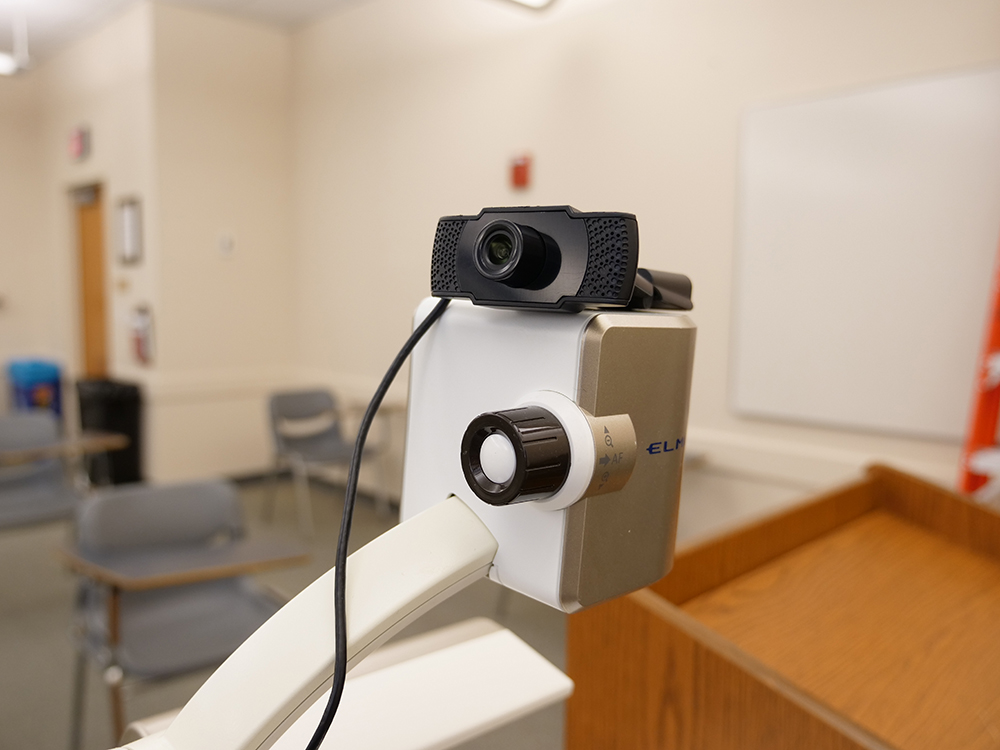The BlendFlex model is a delivery strategy for allowing eligible students to participate remotely in face-to-face courses. The model, as described here, is intended to offer the maximum flexibility possible to accommodate students who need to participate in courses remotely without compromising UCF’s high academic quality expectations.
Background
- Hundreds of students have been displaced or otherwise significantly impacted by the recent hurricane. They may not have stable housing or transportation to attend face-to-face classes. They will need the ability to attend classes remotely.
- We must maintain maximum flexibility for instructional delivery.
- In any given class, at any given point in the term, any number of students, or the faculty, may need to be remote for short or long durations.
“As the university returns to normal operations, we must extend compassion to the students, faculty and staff who have suffered significant and, in some cases, catastrophic losses. That includes being flexible about academic and professional expectations as these members of our community continue to navigate the storm’s impact to their lives.“

Alexander N. Cartwright
UCF PresidentHow It Works
- When not in a physical class, students will “attend” weekly instruction remotely either synchronously (live) or asynchronously (through a recorded session) via Zoom or another video meeting platform.
- Faculty will need to take care not to inadvertently disadvantage remote students by ensuring that they have the same access to resources and materials as student in the classroom.
- A real-time video feed and/or a recording of each class session will be available to those students not in the classroom on a given day. Faculty will need to record their sessions or work with the Office of Instructional Resources to set up Panopto’s classroom-based auto-recording capability.
Advantages
- Faculty largely do not have to significantly modify planned pedagogy—only minor adjustments to classroom practice will be necessary.
- Most classrooms are already equipped with basic technology.
- Most personal equipment (e.g., laptops) can be configured to work.
- If faculty or students are unable to be on campus, the class can be easily moved to a fully remote experience.
Limitations
- Lab sections and other courses (e.g. performance-based) may not work in this model due to their core face-to-face, physical requirements.
- Faculty are expected to teach face-to-face in this model. If the faculty plan to be remote due to extenuating circumstances, they should request to convert the section to fully remote.
- If a deaf or hard of hearing student registered with Student Accessibility Services is enrolled in the course and needs a remote accommodation, a workable captioning plan for that student will need to be devised.
- Additional costs for equipment and support.
Implementation Needs
- Faculty professional development will include:
- When to use Zoom (course is mostly class discussion) vs. when to use Panopto (course is very large or is mostly lecture).
- How to set up and record in a classroom and on the computer.
- Must use the classroom document camera or Zoom whiteboard—cannot use classroom whiteboards.
- Assignments and exams should be able to be submitted/completed online.
- Suggest asynchronous online discussions whenever possible rather than synchronous discussions that involve in-person and remote students.
- Additional equipment is being purchased and installed in some spaces.
BlendFlex Faculty Training
The Center for Distributed Learning and the Office of Instructional Resources have created an online, self-paced course that should take around an hour to complete. This course will give you an overview of how this model will be used at UCF, address questions you may have about its implementation, and identify considerations in teaching practices. It also contains a helpful guide of tools, technologies, and strategies for applying this model in your course.
ENROLL NOWZoom Essentials
We encourage you to enroll in the online self-paced Zoom Essentials course which describes the basic and advanced functions of Zoom and how it can be used within Webcourses@UCF. The time commitment for completing Zoom Essentials is estimated to be between 2-4 hours.
Panopto Essentials
If you choose to use Panopto in your class and haven’t used it in the past, you will be required to either take the self-paced online Panopto Essentials course (estimated to be 2-4 hours to complete).
New Tech in the Classroom
The Office of Instructional Resources has installed web cameras, microphones, and/or adjusted technology in classrooms across many UCF campuses to assist faculty in implementing the BlendFlex model. If you have any questions about your specific classroom, reach out to the Office of Instructional Resources for more information.
Rooms Currently Being Equipped for BlendFlex Support
Review the following spreadsheet [MS Teams] for a complete list of classrooms that have been equipped for BlendFlex support. Please contact OIR at oir@ucf.edu with questions about rooms.
BlendFlex ClassroomsBlendFlex Classroom Cheat Sheet
This PDF includes helpful guides for using Panopto or Zoom in the classroom. It includes guides for both the Main Campus and Downtown Campus. Please note, not all classrooms on the main campus are setup the same or have the same technology. Contact OIR Classroom Support for more information.
View BlendFlex Cheat Sheet

